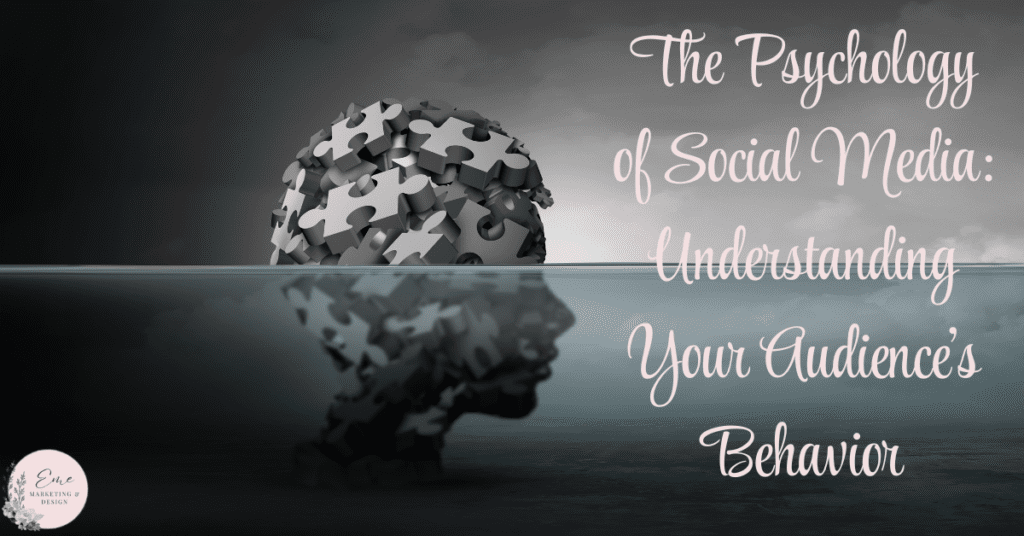
In the ever-evolving digital communication landscape, social media has become an integral part of our daily lives. From scrolling through Instagram feeds to sharing thoughts on Facebook and connecting with professionals on LinkedIn, social media platforms offer a myriad of ways to engage with others. But beneath the surface of likes, shares, and comments lies a complex interplay of human psychology that shapes our behavior on these platforms.
Understanding the psychology of social media is crucial for anyone looking to leverage these platforms effectively, whether for personal branding, marketing, or simply staying connected with friends and family. In this blog, we’ll delve into the depths of social media psychology to uncover the drivers behind audience behavior and explore how you can use this knowledge to your advantage.
The Pull of Instant Gratification
One of the key psychological factors driving behavior on social media is the allure of instant gratification. The dopamine rush we experience when we receive likes, comments, or shares on our posts reinforces our desire to engage with the platform repeatedly. This phenomenon is often referred to as “reward-based learning,” where our brains learn to associate certain behaviors (such as posting a photo or sharing a status update) with pleasurable outcomes.
Understanding this craving for instant gratification can help you tailor your social media content to maximize engagement. By creating posts that are visually appealing, thought-provoking, or emotionally resonant, you can increase the likelihood of eliciting positive reactions from your audience.
The Fear of Missing Out (FOMO)
Another powerful psychological motivator on social media is the fear of missing out, commonly known as FOMO. Seeing friends and acquaintances post about exciting events, travel experiences, or professional achievements can evoke feelings of envy or inadequacy in others, driving them to engage more actively with the platform in an attempt to stay in the loop.
As a content creator or marketer, tapping into this fear of missing out can be a potent strategy for driving engagement. By highlighting exclusive or time-sensitive offers, behind-the-scenes glimpses, or sneak peeks of upcoming events, you can create a sense of urgency that compels your audience to take action.
Social Proof and Conformity
Humans are inherently social beings, and we often look to others for cues on how to behave in social situations. This phenomenon, known as social proof, plays a significant role in shaping our behavior on social media. When we see others liking, sharing, or endorsing certain content, we’re more likely to perceive it as valuable or trustworthy and are thus more inclined to engage with it ourselves.
Understanding the power of social proof can inform your content strategy in several ways. By featuring testimonials, user-generated content, or endorsements from influencers or thought leaders in your niche, you can leverage the credibility and authority of others to enhance the perceived value of your brand or offerings.
The Influence of Cognitive Biases
Our brains are subject to various cognitive biases that can influence our perceptions and decision-making processes. On social media, these biases can manifest in the form of selective attention, confirmation bias, or the availability heuristic, shaping the content we consume and the opinions we form.
For content creators and marketers, recognizing these cognitive biases can be instrumental in crafting messaging that resonates with your audience. By framing your content in a way that aligns with their existing beliefs, values, or preferences, you can increase the likelihood of capturing their attention and eliciting a positive response.
The Role of Emotional Triggers
Emotions play a significant role in driving behavior on social media, often serving as powerful catalysts for engagement. Whether humor, nostalgia, awe or empathy, content that evokes strong emotional responses is more likely to be shared, commented on, and remembered by audiences.
Understanding the emotional triggers that resonate with your target audience can guide your content creation efforts. By tapping into their aspirations, fears, or desires, you can create content that fosters genuine connections and prompts meaningful interactions.
The Illusion of Control
Despite the curated nature of social media feeds, many users harbor a sense of agency and control over their online personas. Whether it’s through carefully selecting which photos to post or crafting the perfect caption, users often seek to present themselves in the best possible light and maintain a sense of autonomy over their digital identities.
As a content creator or marketer, respecting your audience’s sense of control is essential for fostering trust and engagement. Instead of bombarding them with overly promotional or intrusive messaging, focus on creating content that empowers them to make informed choices and actively participate in the conversation.
Final Thoughts
The psychology of social media is a multifaceted phenomenon encompassing a wide range of cognitive, emotional, and social factors. By understanding the underlying drivers behind audience behavior, content creators and marketers can tailor their strategies to engage and connect with their target audiences effectively.
From leveraging the allure of instant gratification and the fear of missing out to harnessing the power of social proof and emotional triggers, there are myriad ways to tap into the psychology of social media to drive engagement and foster meaningful interactions. By adopting a nuanced understanding of human psychology and applying it to your social media efforts, you can unlock the full potential of these platforms to connect, inspire, and influence others.
Gain a deeper understanding
of the psychology of social media.
Use our two decades of experience to understand your social audience.




